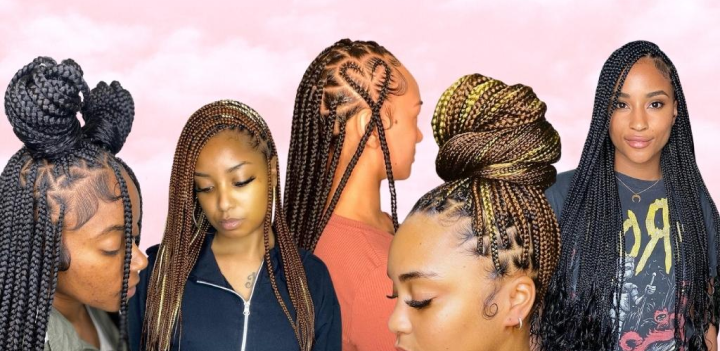
One of the many reasons we appreciate our natural hair is its adaptability. It can be worn curly, stretched, matted or straight. You can also choose extension styles if you decide to switch up your look. But what exactly are extension styles, and should they be considered protective?
Protective styles are hairstyles that protect the integrity of our hair strands from the harsh effects of extremely dry, cold or hot weather and from being overly manipulated.
Protective hairstyles are great for many reasons. They are the safest way to look good, retain length, and are great for easy maintenance and versatility. They are intended to keep your hair healthy and manageable between wash days. More importantly, a protective style should feel comfortable and painless.
An extension style involves adding hair extensions for beauty, length or longevity.
A style is considered protective when external factors that cause dryness, breakage, traction hair loss and inflammation do not come into play. This level of protectiveness applies not just to the style itself. It also applies to the installation, the period in which it is worn, and the takedown.
Our in-house Trichologist, Koyinsola Vera-Cruz, explains that a style with extensions may not necessarily be protective. Extension styles could be protective; however, more often than not, they contribute to hair damage and loss if not installed or managed properly. This could be immediate or may take years to manifest.
Our follicles are strong enough to carry the weight of one, two or three hairs that grow out from them, but they are not built to carry much more and certainly not for extended periods. Adding extensions to increase hair length may extend the longevity of a style, but one must exercise great caution to prevent damage to the scalp, edges and hair strands. For example, installing extension styles involves more tension, wearing them could be weighty and taking them down requires more manipulation and extra caution while detangling.
Furthermore, whether an extension style is deemed protective depends on the methods and techniques adopted by your hair technician. Working with highly skilled hairstylists in these styling techniques is essential to prevent any hair abrasion and scalp damage.
Your hair is less likely to tangle when it is in a protective style. Protective styling helps to keep the hair healthy, retain moisture, and enable manageability and length retention.
For a style to be protective, your hair cuticles must be laid smooth, your follicles must have little or no pressure, and your hair and scalp must remain manageable and clean. This ensures your strands stay strong and healthy.
The moment your style begins to become unmanageable or tangled, your style has stopped protecting your hair, and your hair is probably due to be restyled or washed. Be it in twists, cornrows, curl sets, pin-ups or ponytails, an essential characteristic of a protective style is that it must be gentle on your hair and head.
Protective styling goes hand in hand with your wash and conditioning routine; otherwise, you may be in a stagnant or backward progression with your hair care journey.
Here are some quick guidelines you can use when wearing a protective hairstyle:
Protective styles help your hair stay healthy and let you take a fuss-free approach to hair care. You can wear diverse styles as you please. As long as you stay within the guidelines of what an actual protective style is, you are on the right track. Developing a reliable hair care routine with a hair care professional alongside the use of favourable products, techniques, and protective styles will substantially improve the condition of your hair and scalp.
Copyright 2025 © Tresses Lagos | Created with 🤍 by Toast
Subscribe to our weekly newsletter for expert tips and tricks on healthy hair care and get our free Hair PlayBook.